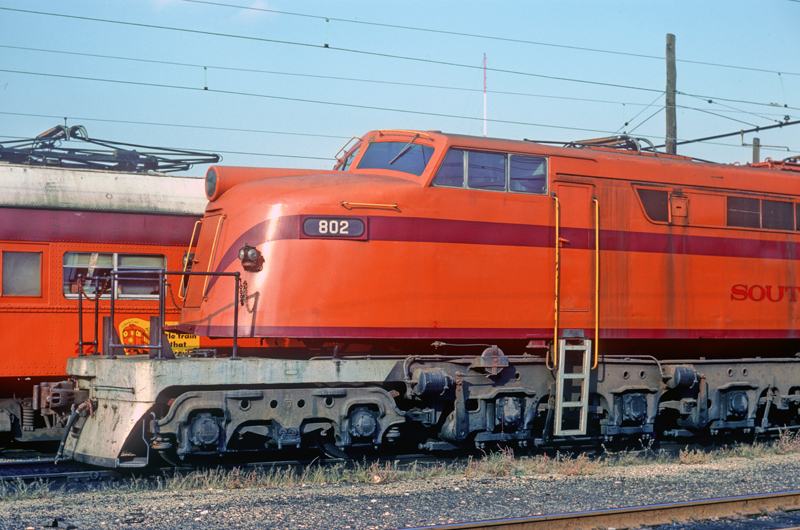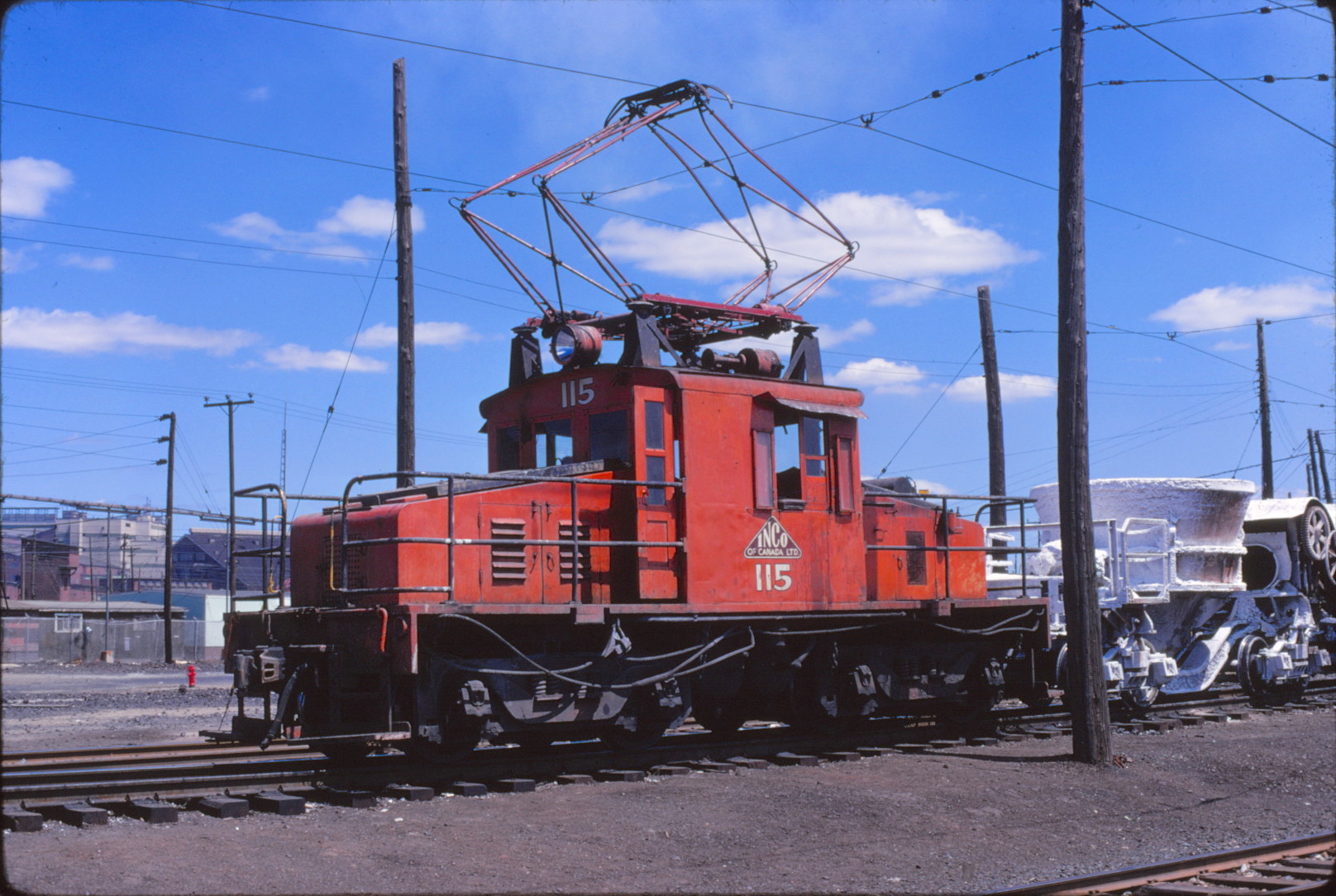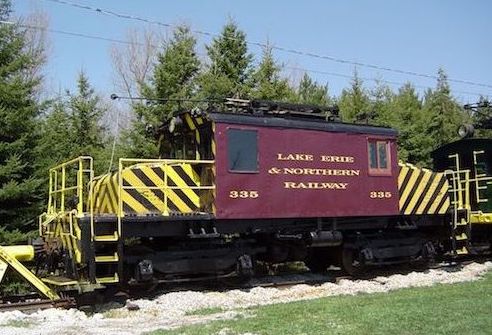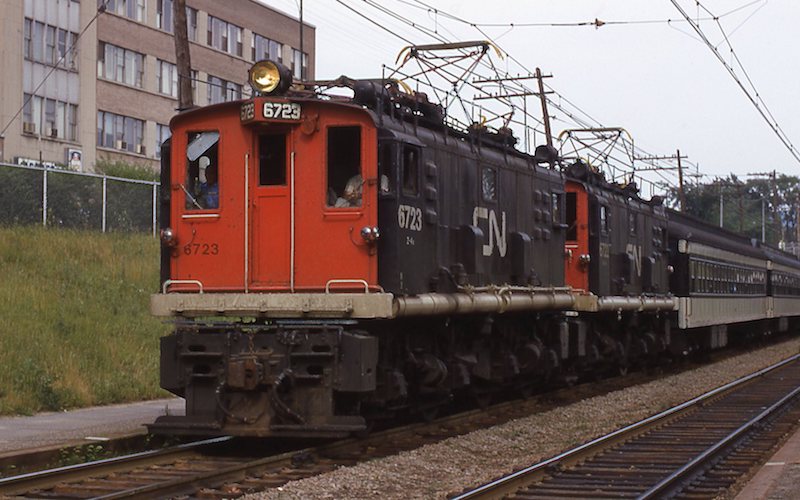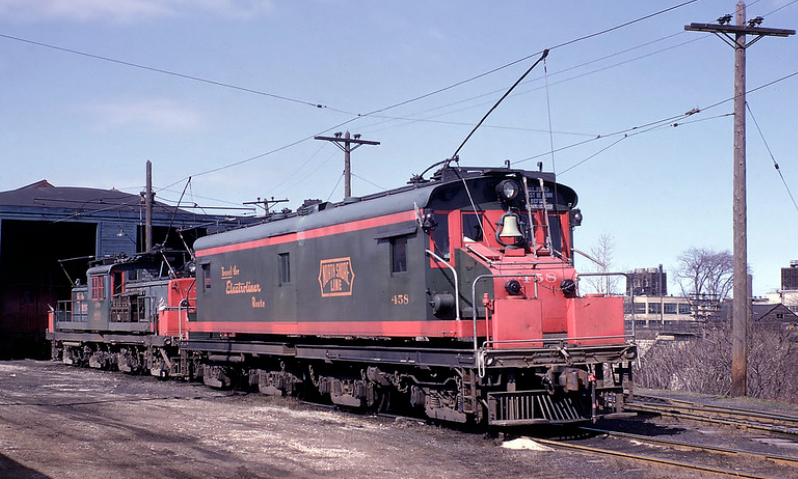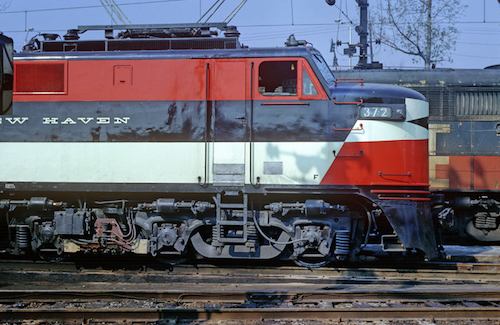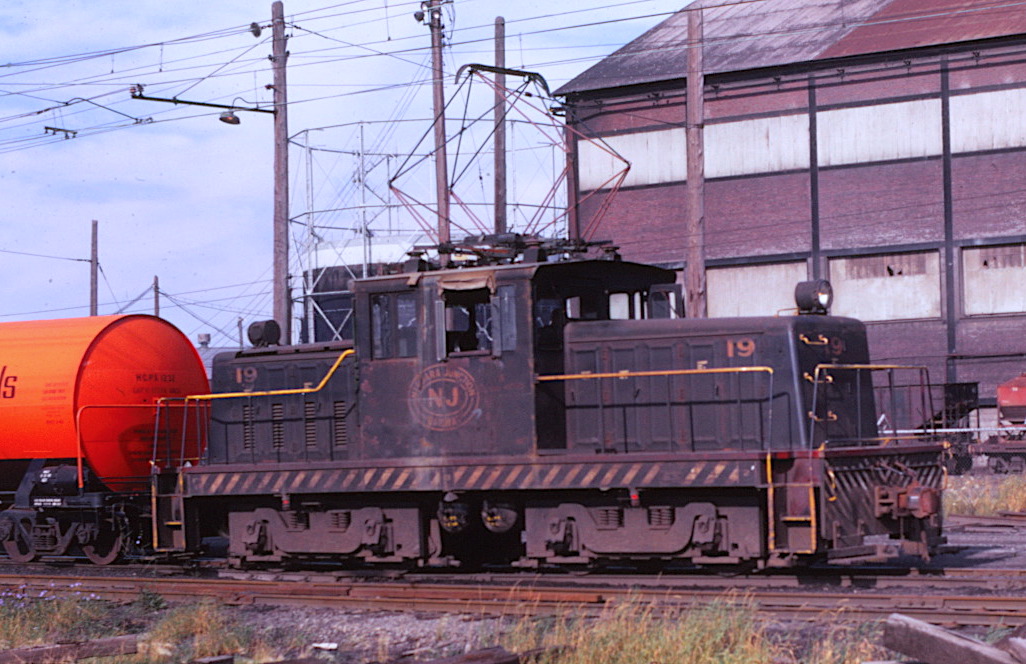Electric Locomotives
CSS&SB #802 on 10 October 1976 (C. Richard Neumiller photo / Bon French Collection) | |||||
|---|---|---|---|---|---|
|
Once an important part of the North America transportation net, the number of electric rail
lines still in day-to-day revenue service, outside of the Northeast Corridor (and tourist
pikes), are but a tiny fraction of the past. They are no longer a key component of the nation's
social and economic fabric, nor do they any longer hold the promise of rail transportation's
future.
The first electric-powered locomotives appeared in the early 1890s; they represented a challenge
to steam because of their lower cost to build, operate and maintain. Those collective advantages
however were offset somewhat by the capital cost associated with constructing support
infra-structure, generating stations and miles upon miles of overhead wire.
General Electric and Baldwin Locomotive Works were the largest of the builders. GE had been
spear-heading electric-powered transportation since 1892. An early achievement was the
electrification (equipment installation and locomotives) for the world's first electrified
railroad main line; a 3-mile section of the B&O in Baltimore, MD. Both major builders relied
on sub-contractors for help: GE used Schenectady, NY-neighbor Alco for the supply of car-body
and mechanical components, while Baldwin Locomotive usually teamed with Westinghouse for major
electrical components and control systems. On some rare occasions, the roles would be reversed.
Two factors spurred the growth of electric rail lines. The first was a technological break-through
in 1896 which saw the development of high-voltage alternating current distribution systems and
substations that facilitated the conversion of power into low-voltage direct current (similar
to that employed by street cars and interurban). The other was the Kaufman Act of 1923. The
New York state law dictated only electric-powered locomotives be used within the boundaries
of New York City; comparable laws were passed in other cities and states . The New York declaration was
meant to improve transportation safety; smoke-filled tunnels caused by steam engines had become
hazardous to public transportation. (Note: the new law was also arguably a fore-runner of
the "green" and "sustainable design" practices that took hold a half century later.
Initially, freight units were primarily straight electric, but before long supplemental
battery or diesel generator capability were made available. And, in a some instances heavy-duty
freight locomotives were built utilizing all three modes (tri-power). Steeple center-cabs
tended to be straight electric because of space limitations. These subject will be explored
periodically in the months ahead. For purposes of future discussions (and convenience)
only, electric freight motors are divided into different types based on car-body configuration,
irrespective of horsepower and weight, pantograph or trolley pole:
| |||||
| Steeple Cab
International Nickel #65-115 (Joe Brockmeyer photo) |
Steeple Cab with short nose
Lake Erie & Northwestern #335 (Tom Starr collection) |
||||
|---|---|---|---|---|---|
| Box Cab
CN 6723 at Departing Central Station in Val Royal, Quebec on 3 July 1970 (Bill Linley photo) |
Elongated / Articulated Box Cab
CNS&M #458 at N. Chicago, Illinois on 15 April 1962 (Marty Bernard photo) |
||||
| Streamlined Cab
New Haven #21 (C. Richard Neumiller photo / Bon French collection) |
Modern Center Cab
Niagara Jct #19 at Niagara Falls, NY on 3 August 1969 (Bob Wilt photo) |
||||
| New: 1 July 2021 | Formatted by: R. Craig | ||||
